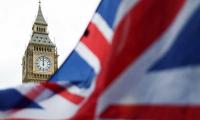Over the last few weeks, the noise regarding a sovereign default by Pakistan has gained traction, further amplified by social media activity. The noise is largely devoid of facts, and speculative in nature as it mostly draws strength through parallels with Sri Lanka, which recently 3declared a sovereign default and is undergoing a political and economic crisis of its own.
Although we do have our fair share of political crises, and a perennial balance of payments crisis grounded in mismanagement by successive governments, we are still not even close to a sovereign default. Such noise often gains traction as soon as we get close to the peak of a balance of payments crisis, and eventually subsides. Similar concerns have gained traction at least half a dozen times in the last 25 years, wherein the country has seen much worse crises, but has never defaulted. Pakistan has never been in default on its sovereign debt, except for a technical default that occurred in the last decade of last century due to sanctions that were imposed on the country following nuclear tests.
It is important to first understand what the conditions of a sovereign default are. A sovereign default occurs when a sovereign nation is not able to pay back its creditors, whether the interest or principal amount as per its commitment. In case a default materializes, ideally all creditors sit together and work out a restructuring plan, such that the sovereign can eventually pay back its debt. Pakistan has been an active borrower from the capital markets over the last two decades, but relative to total external debt, debt from global investors or commercial financial institutions is about 17 per cent of total external debt. Similarly, debt from global investors or commercial financial institutions in Foreign Currency (FCY) is around eight per cent of total debt. It is essential to understand the context here.
It is important to understand the composition of Pakistan’s debt position here. Roughly 63 per cent of debt is PKR based, which means it is domestic debt, subscribed by the population and institutions of the country, largely through banks, which utilize individual and institutional deposits alike to invest in government debt. The sovereign can’t really default on this, as it can theoretically print more currency, and repay earlier PKR-based creditors. Although printing more money creates more problems than it solves; the logical consequence of it is inflation, which means erosion in purchasing power for everyone. Cash in Circulation has substantially increased over the years largely due to the SBP printing more money, which continues to fuel inflation.
External debt (mostly US$) makes up 37 per cent of our total debt. Further breaking down external debt, 24 per cent is due to other sovereign nations (mostly friendly), 57 per cent of external debt is due to multilateral institutions, while another 17 per cent is due to private investors through Eurobonds, Sukuks, and commercial loans. Multilateral institutions have rarely (if ever) called on a default, they negotiate with the borrowing country, no matter how stubborn, and eventually work out a restructuring plan. Similar to what has happened in our case during the last half century, wherein we have reached out to the International Monetary Fund (IMF) on an average of every three years. Debt due to other sovereign nations is an extension of the relationship that exists between the sovereigns.
Finally, it is the private investors subscribing to the country’s debt who may call on a default in case an interest or principal payment is not made. These private investors need to be the first ones to be paid, and it is estimated that the country needs to pay $3.1 billion to these investors during the current year. A sovereign with a GDP of more than $380 billion, which has posted growth rates to the north of five per cent during the last two years isn’t really going to default on an amount less than one per cent of its GDP, or just about equivalent to a month of remittances. This is more of a liquidity crisis rather than a credit issue. Rapid rise in commodity prices after the pandemic, as well as geopolitical volatility has put budgets of countries around the world under strain, particularly of commodity importers. However, as recessionary fears materialize globally, there has been a decline in commodity prices across the board, which will provide some respite to Pakistan and provide some breathing space in terms of liquidity.
This time it is slightly different though, as none of the friendly sovereign nations is willing to extend any fresh debt, or rollover, till we get the IMF programme in place, which means till we agree to ensure some kind of fiscal and monetary discipline. We have flirted with default multiple times over the last three decades, but we cannot stay safe from it forever. This may be our last chance, thereby necessitating structural reforms which institutes fiscal, and monetary discipline. An uncontrollable expense budget, and demonstrated inability to generate tax revenues are issues that need to be resolved. Without structural reforms, we may potentially default during the next ten years, because the punch bowl isn’t going to last forever.
The current crisis pales in comparison to many other economic crises that Pakistan has faced earlier. This however does not mean that we should continue living dangerously, and considerably beyond our means. This may be the country’s last chance to put the house in order and gradually move away from import dependent consumption, and reconfigure the economy to be more export oriented, with an expansive and progressive tax base.
A resolution of the decision-making crisis and a much-needed consensus among all political and non-political actors would stave away any risk of sovereign default. If the country continues to inch towards a default this time around, it would solely be a consequence of the current political crisis, in addition to consistently bad policymaking during the last 50 years.
The writer is an independent macroeconomist.
Most recently, US presidential elections demonstrated how AI has amplified partisan split
Few years ago, Pakistan ranked as fourth-largest freelancer market globally, with potential to become number one
Arts Council Karachi celebrated its 70th birth anniversary at inaugural session with big cake
There are over 11 million Pakistanis settled abroad, out of which around six million work in Gulf and Middle East
This year alone, US Treasury would have to roll-over $10 to $14 trillion in maturing short-term debt
Tear gas no longer marks just protest sites; it paints entire cities as battlegrounds but then again, PTI did it first







